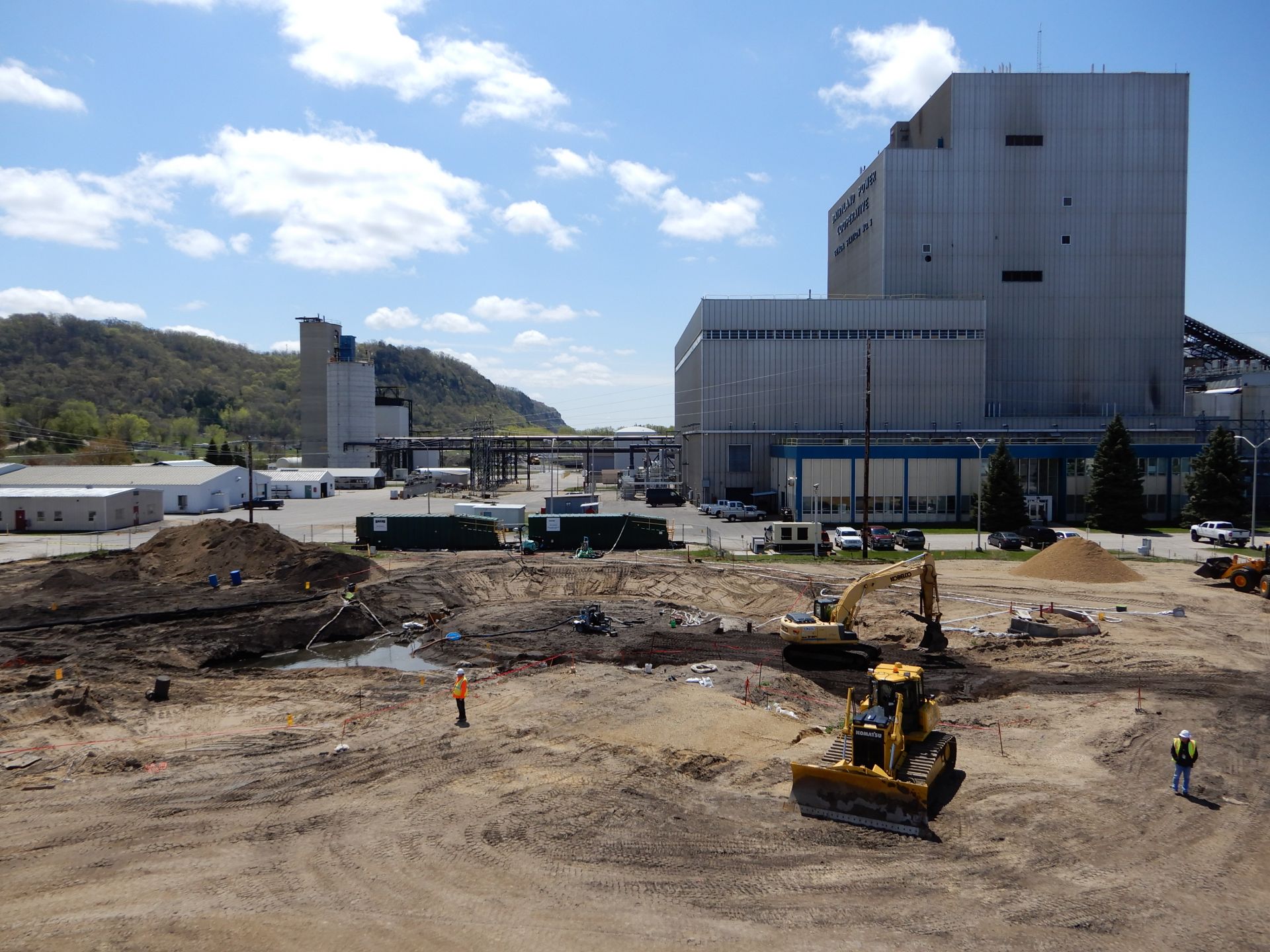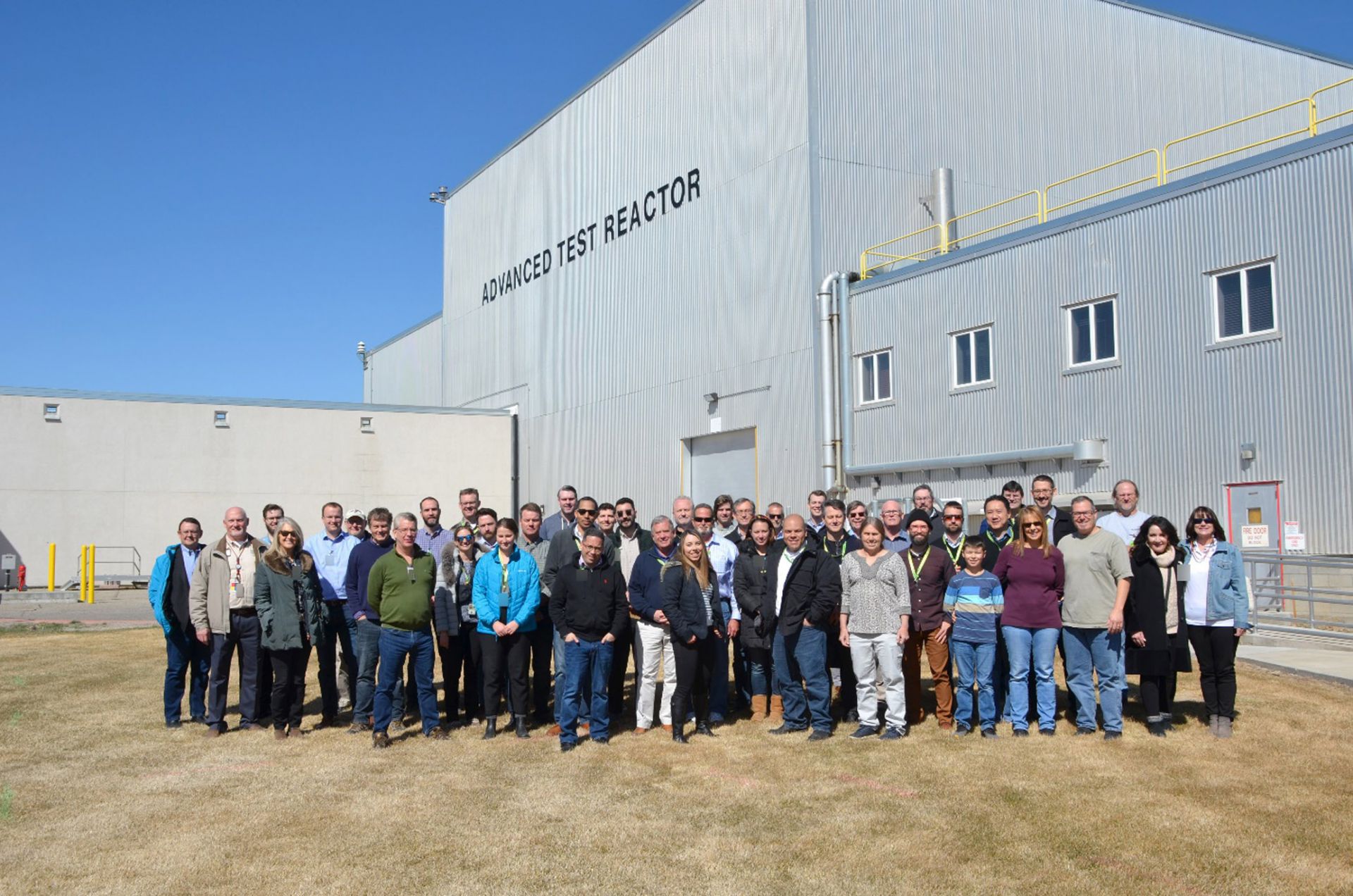President Biden met with the leaders of Canada, France, Germany, Italy, Japan, and the United Kingdom at the G7 Summit, held May 19–21 in Hiroshima, Japan. (Also pictured are representatives of the European Commission and European Council.)
On the sidelines of the G7 summit in Hiroshima, Japan, over the weekend, the Biden administration and partners Japan, South Korea, and the United Arab Emirates announced a public-private commitment of up to $275 million to support the advancement of NuScale Power’s small modular reactor project in Romania.
A Nucor electric arc furnace. (Photo: Nucor)
NuScale Power and steel manufacturer Nucor have signed a memorandum of understanding to explore the deployment of NuScale’s VOYGR small modular reactor plants at Nucor’s scrap-based electric arc furnace (EAF) steel mills, the Portland, Ore.–based SMR developer announced Tuesday.
Officials from the U.S. and Romanian governments, NuScale, and Nuclearelectrica gather at the University Politehnica of Bucharest on May 12 to debut the first NuScale E2 Center in Europe in preparation for the deployment of a VOYGR SMR power plant in Doicești, Romania. (Photo: NuScale Power )
NuScale Power has announced the opening of its fifth Energy Exploration (E2) Center, at the University Politehnica of Bucharest, in support of the small modular reactor developer’s ongoing collaboration with the U.S. and Romanian governments and Nuclearelectrica, operator of Romania’s Cernavoda nuclear power plant.
Dignitaries assemble after the signing of a memorandum of agreement to help Indonesia develop a nuclear energy program. Among those at the signing were Indonesia's minister for economic affairs Airlangga Hartarto, U.S. ambassador to Indonesia Sung Y. Kim, and U.S. Department of State principal deputy assistant secretary Ann Ganzer. (Photo: State Dept./Erik A. Kurniawan)
The United States and Indonesia have announced a strategic partnership to help the latter nation develop its nuclear energy program, supporting its interest in deploying small modular reactors to meet energy security and climate goals.
A rendering of a NuScale VOYGR plant. (Image: NuScale)
NuScale Power, the Portland, Ore.–based small modular reactor developer, announced last week that it has placed the first upper reactor pressure vessel (RPV) long-lead material (LLM) production order with South Korea’s Doosan Enerbility.
The La Crosse site in 2019 with major decommissioning completed. The coal-fired Genoa plant is in the background. (Photo: EnergySolutions)
The Nuclear Regulatory Commission announced that it has released the site of the La Crosse boiling water reactor in Wisconsin for unrestricted public use. The action comes after the NRC found that EnergySolutions subsidiary LaCrosseSolutions had met the agency’s radiation protection standards in decommissioning the nuclear power plant.
Industry professionals visit INL as part of a U.S. Nuclear Industry Council Conference. (Photo: INL)
The Department of Energy’s commitment to breaking down market barriers with initiatives, programs, and access to facilities is making it simpler and more efficient than ever for industry to partner with national laboratories. It is especially timely, as the country continues to face evolving security, economic, and clean energy challenges. Partnering opportunities via the DOE’s Cooperative Research and Development Agreements (CRADAs) and Strategic Partnership Projects (SPPs) are particularly prevalent in the commercial nuclear community and have seen a tremendous amount of funding and support dedicated to advancing the development, demonstration, and deployment of new reactor technologies.
An illustration of EDF’s NUWARD small modular reactor technology. (Image: EDF)
France’s Électricité de France and Polish renewable energy trader Respect Energy have signed a cooperation agreement to develop nuclear power projects in Poland based on EDF’s NUWARD small modular reactor technology, the companies jointly announced last Friday.
The NuScale control room simulator has been used to showcase the plant’s design, prototype new displays, and test the operator and supervisor procedures in a fully digital control room. (Photos: NuScale Power)
Since the inception of commercial nuclear power in the United States, every control room in every nuclear plant has looked essentially the same. You will see fixed alarm tiles, red and green lights, rows of switches, and analog meters. Until about a decade ago, you would even have seen paper charts (now replaced by digital versions of those same charts). Licensed operators have shown through a proven operating history that this control room design is safe and effective. Genius definitely went into the complexity of circuits and placement of switches and indications in the design, but things have come a long way over the years, and new technology, updated plant designs, and the need to improve efficiency and maintain reliability have impacted staffing and the role of operators. A control room update is long overdue. So, what lies ahead for the future of nuclear control room design? What possibilities exist for the next generation of plants?
U.S. special envoy for climate John Kerry at COP27. (Photo: Embassy of Ukraine in the United States of America)
U.S. special envoy for climate John Kerry and Ukraine’s minister of energy German Galushchenko have announced a two-to-three-year pilot project aimed at demonstrating the commercial-scale production of clean hydrogen and ammonia from small modular reactors in Ukraine using solid oxide electrolysis.
















